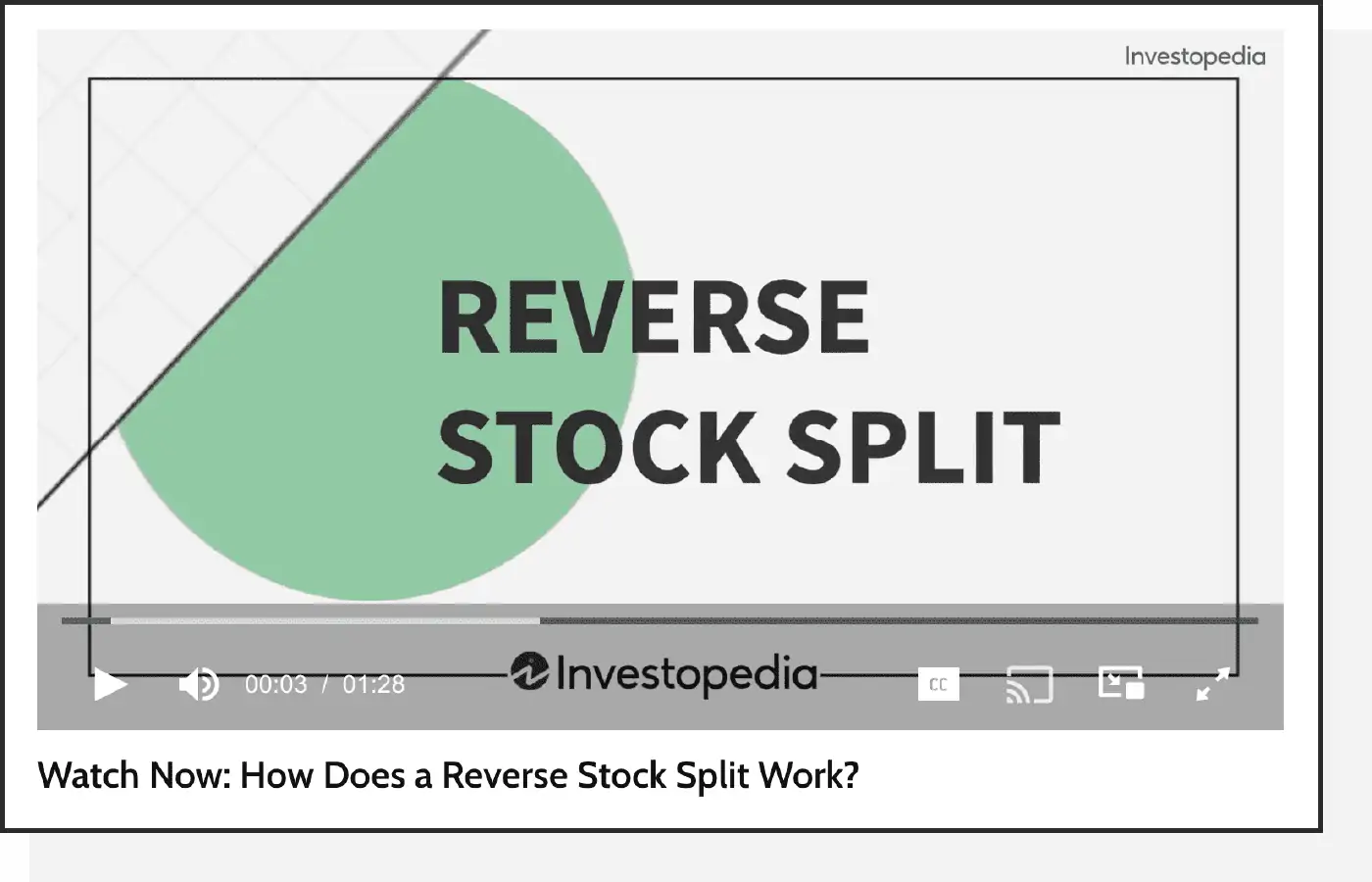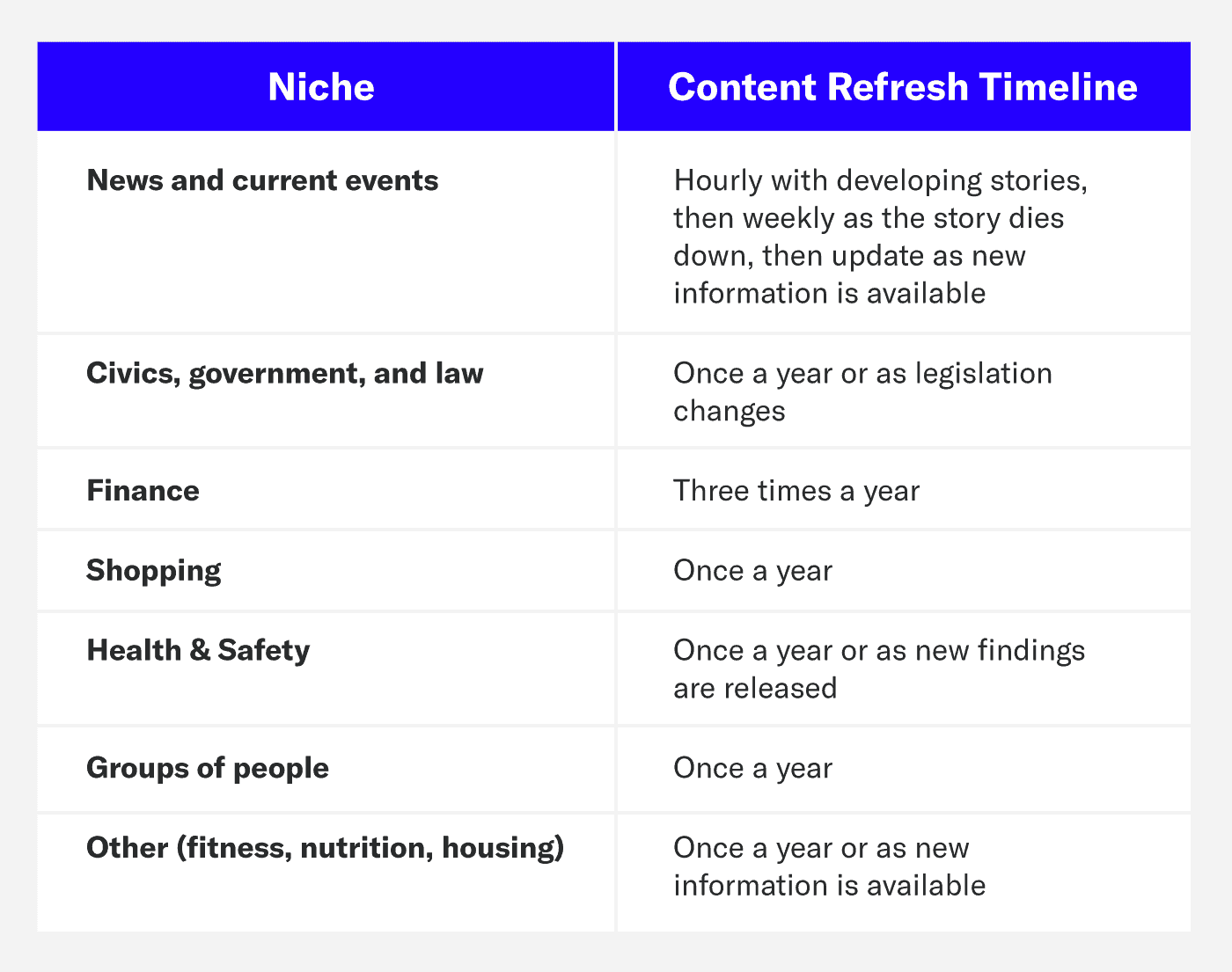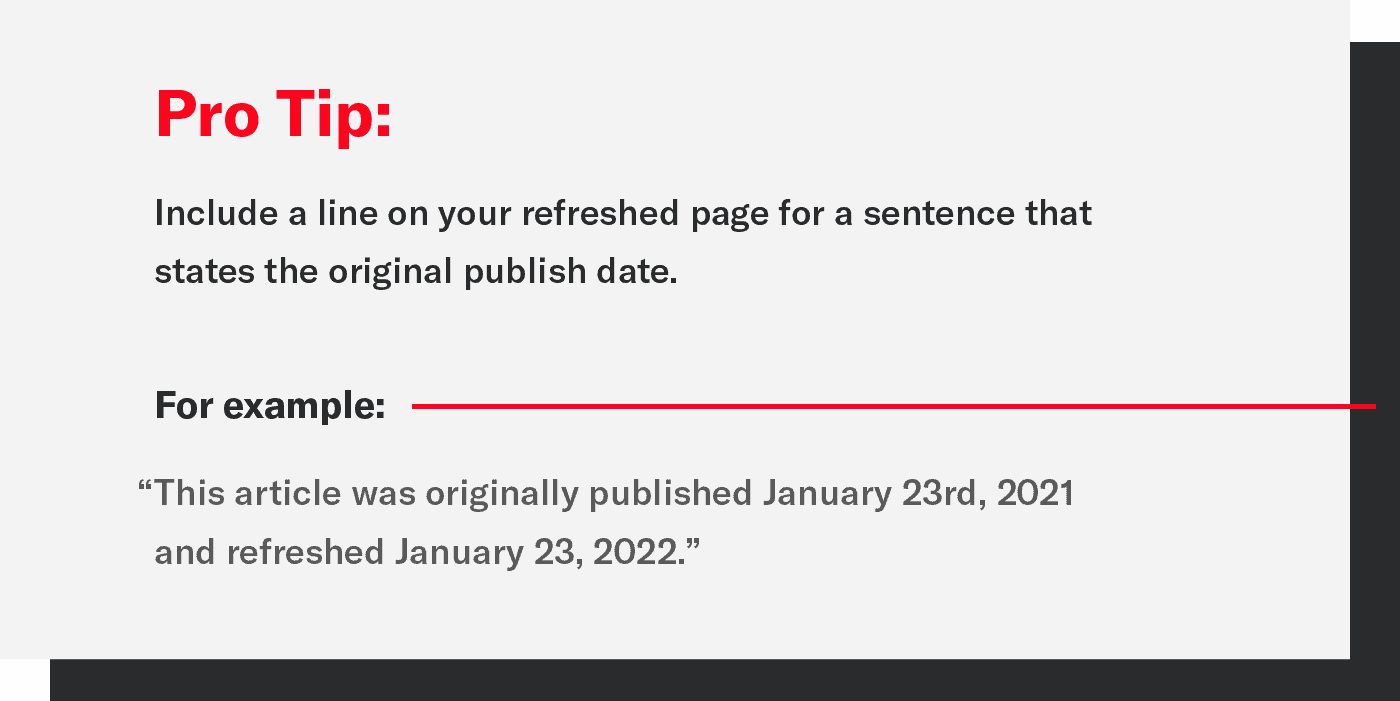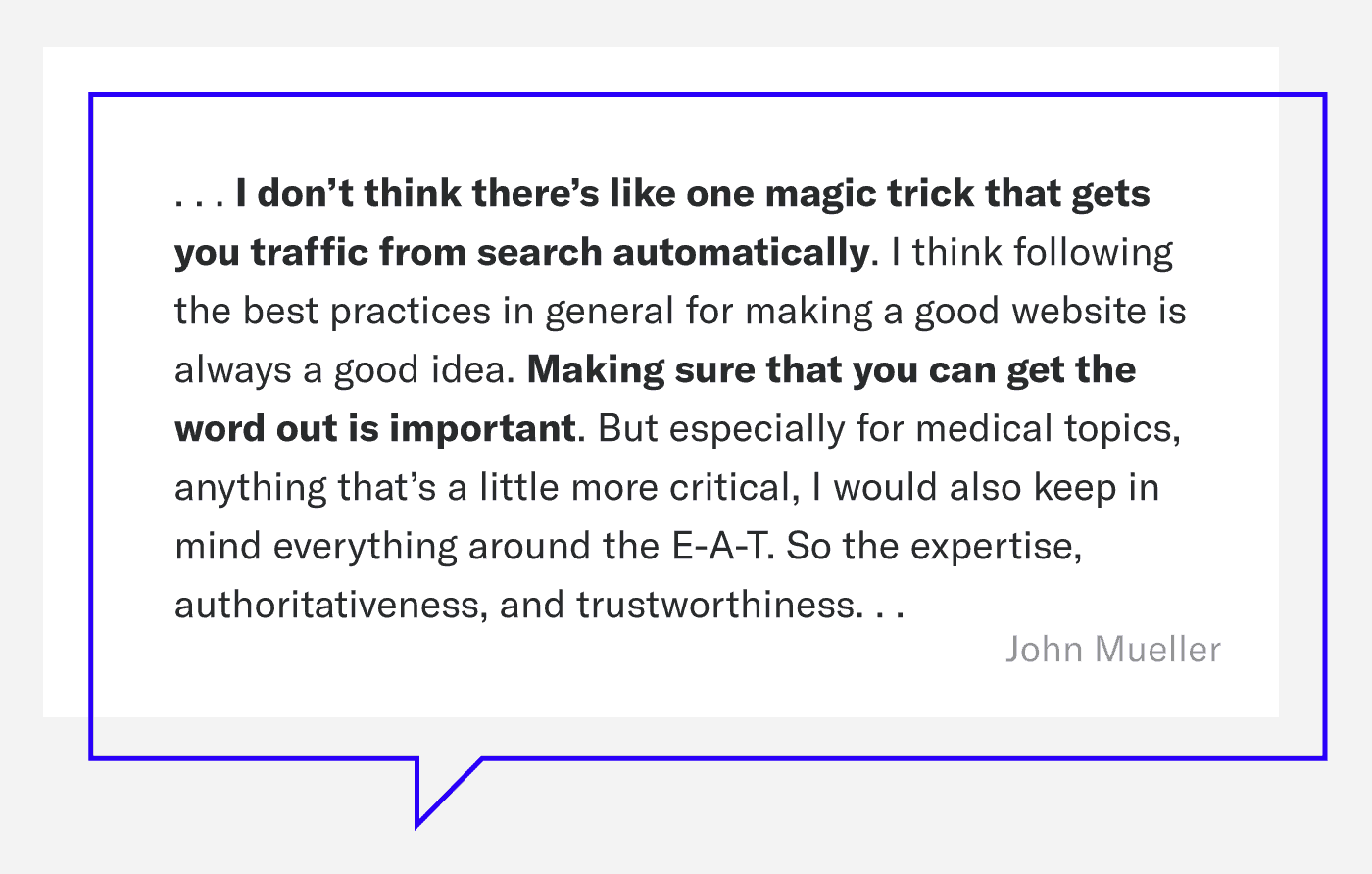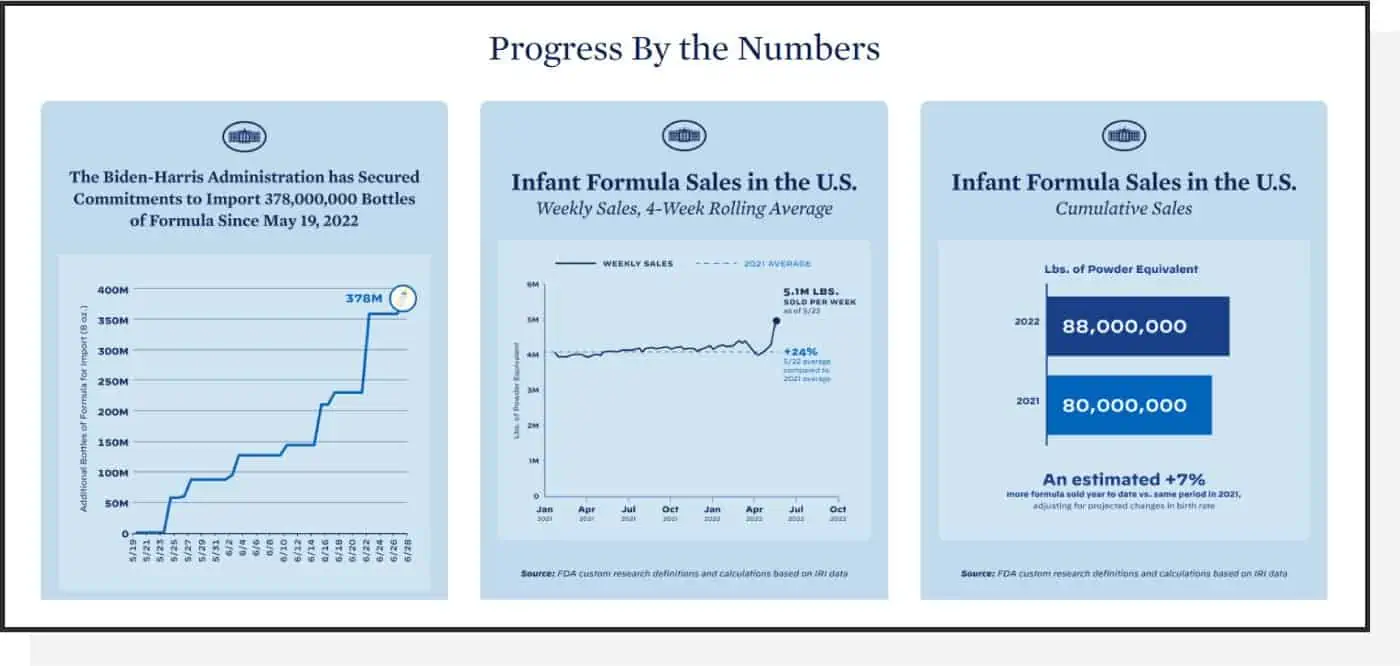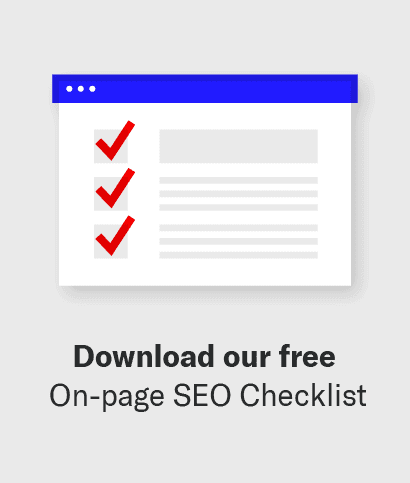With so many acronyms in SEO today, keeping them straight can get a bit confusing or overwhelming. Enter YMYL.
I remember when I first heard YMYL and I instantly assumed it was a new boy band. Boy, was I wrong.
Google’s updates to how it treats YMYL, or “your money your life” sites and E-E-A-T (Experience, Expertise, Authority, Trustworthiness) are strides to help Google serve the best possible content to its users.
Often referred to as the “Medic” update, Google’s 2018 algorithm update towards YMYL content came with extreme SERP fluctuations. But once the dust settled, it was clear what Google was looking for from YMYL content creators and all websites as a whole: High-quality content and a great user experience.
In this post, we’ll walk through the most effective strategies to help YMYL sites grow their traffic, successful examples of YMYL sites, and the common pitfalls YMYL content creators face.
driving growth in the fintech space
What Is YMYL in SEO?
As we learned above, YMYL is an acronym in SEO that stands for “your money or your life.”
This refers to content that provides information meant to influence a person’s life — either positively or negatively.
Essentially, this can be any site or page that comes from a trustworthy, knowledgeable source.
According to Google’s Search Quality General Guidelines from October 2021, YMYL sites or pages are typically:
- News and current events
- Civics, government, and law
- Finance
- Shopping
- Health and safety
- Groups of people
- Other (fitness, nutrition, housing)
Say you started trading stocks and wanted to learn what a reverse stock split is. Or maybe you notice you’re getting headaches often. Chances are you’re familiar with Investopedia or WebMD as trustworthy sources of information.
As users of Google, we hope (and mostly assume) the content we get is from a trustworthy and reliable source with research-backed content. And, with Google’s strict guidelines for YMYL content, this is exactly the case in most searches.
It’s also important to take into consideration the purpose of a webpage in Google’s eyes. Ultimately, creating helpful, factual, high-quality content is what people are looking for.
Put simply, if your content serves to help people and provides a positive user experience, Google will provide a higher page rating.
Google’s Search Quality Guidelines on page rating:
Apply YMYL Best Practices to Your Strategy
Today, YMYL best practices are generally straightforward and utilized by all pages and sites, not just those in the YMYL category.
Implementing these best practices into your strategy is the best way to showcase your site’s E-E-A-T. Without them, your site could have difficulty ranking or establishing trust with your audience.
Create High-Quality Content
We all know Google does its best to only serve the most relevant, high-quality content in SERPs. YMYL queries are no different.
Ensure you button up your content from top-to-bottom. Google’s Search Quality Guidelines give great insight into what Google is looking for when it comes to high-quality content.
Let’s dive into a high-quality piece of content from a reputable source.
The #1 result for the query (as of this article’s writing), “what is a reverse stock split?” is an article from Investopedia. How can we tell it’s a high-quality article aside from its top ranking for a competitive keyword?
- It’s transparent.
Showing the author, reviewer, and fact-checker shows transparency for who is responsible for the production of the content and also establishes topic expertise.Each of these people also have links to their bios on author About pages that include their expertise on the subject, professional experience, and education.
They use reputable sources and include in-text citations while also listing them at the end of the article to allow users to explore on their own.
- The post answers the query almost immediately.
The first header and paragraph immediately answers the question, “What is a reverse stock split?”Not only that, but the answer is thoroughly explained, even including “also known as” terms. The author then goes on to include key takeaways that provide a more digestible definition.
- Different media types are offered.
If reading isn’t your jam, Investopedia also includes a short, high-quality video that explains what a reverse stock split is and how it works. - Reinforces the topic with examples.
We’ve already established that YMYL sites can impact a user’s decision-making process.Investopedia takes this a step further to give a user all of the information they may need on the subject of reverse stock splits with advantages and disadvantages of why a company would choose to do a reverse split.
They even provide a real-world example to show the math involved and how the numbers would play out, even giving insight into the business decision of enacting a reverse split.
The FAQs at the end of the article complete the topic, leaving a high chance a user receives all the information they need.
- Overall, it provides a great user experience.
One of the first things you notice when you land on this article is its table of contents. Utilizing a table of contents for long pieces of content helps a user navigate and jump to sections important to them.There are no pop-ups or interstitials that could be viewed as spam. Ads on the page are in designated places that do not interfere with the content.
Refresh Your Content Annually
High-quality content is only as good as it is relevant. Be sure your content is as relevant to your audience as possible by refreshing your content consistently.
We always recommend refreshing content yearly. If you’re in a fast-moving niche where things can change every few months, or there is a lot of competition, consider revising your content every three to five months.
If refreshing your content is daunting or you are on a small team with limited bandwidth, start small.
Focus on updating titles, metadata, and your headers. Then, once you have more data on your content, work on updating flow, graphics/images, and overall user experience.
We always recommend refreshing poorly performing content, but refreshing your most popular, high-performing content is just as important.
Showcase Experience, Expertise, Authority, and Trustworthiness
Although E-E-A-T is not a direct ranking factor, it plays a major role in whether or not your content will rank.
Important for all types of content, E-E-A-T is especially important for YMYL. Google’s John Mueller hinted at the increased importance of E-E-A-T for YMYL topics in an interview, stating:
At Siege, we recommend showcasing E-E-A-T in the following ways:
Include an author on each blog post or article and ensure it links to an author about page that showcases the author’s expertise.
If your site has content on medical topics, consider having it reviewed by a medical professional and linking to an About page.
This example from Healthline.com’s post on ADHD provides a great example of proper implementation of author and reviewer attribution.

Add formal and informal qualifications to your site.
We recommend this information goes on your About page for sitewide expertise and specific author pages for individual expertise.
The below example is from Matt G. Southern’s about page on Search Engine Journal. Matt’s bio shows he’s been writing in the SEO industry since 2013 and includes his other responsibilities at SEJ.

Showcase your site’s authority for a topic.
Authority is built over time.
Utilize site About pages to show how readers can trust your content and that your site is the authoritative source.
Let’s use our stock example from earlier. We already know the article was high-quality content and provided us with factual information.
But what about the site as a whole?
The below example from Investopedia’s About page does a great job of showing their authority by showcasing how long they have been providing this type of content and how they help people with investing.
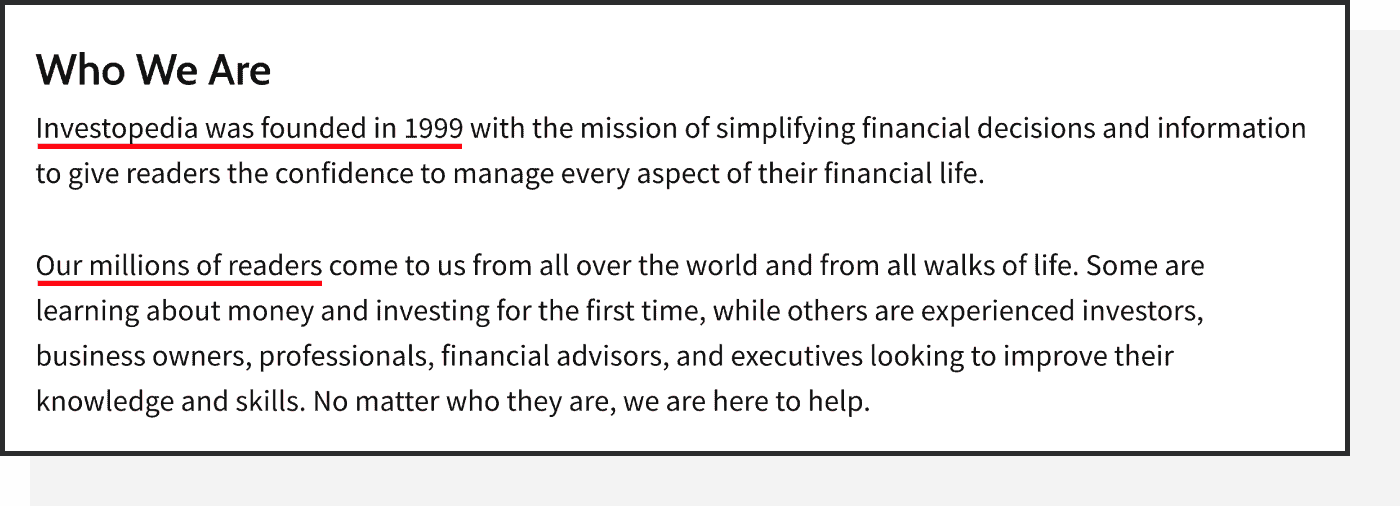
Vet and cite your sources.
Citing your sources adds a level of transparency and credibility to your content.
On top of citing, always be sure to vet the sources you plan to cite.
To help streamline the process of scraping content from quality sources with ImportXML and HTML, check out our guide.
Overall, ensure your source establishes itself with E-E-A-T. Some questions to ask yourself when determining if a source is credible:
Is this source . . .
- Written by a qualified person?
- Fact-checked or reviewed by a credible person?
- From a website that publishes quality, relevant content?
Examples of YMYL Websites Across Niches
Let’s take a look at YMYL sites across different niche’s:
Whitehouse.gov
Whitehouse.gov is the epitome of YMYL content.
All of their content keeps people informed on policy changes and other legislation on a daily basis. They need to be the top authority for all things related to the U.S. government.
Let’s see how they handle their content.
We’ll take a look at their article on how they are addressing the infant formula shortage.
It’s a relatively short article, but it provides all the information most people need.
What they’re doing well:
- Transparent with timelines and actions taken
- Including graphical elements to help tell the story
- Providing a link to FAQs for people to explore more information
What they’re not doing well:
- Not much
There’s gotta be something they’re missing, right?
Well, yeah, there are no sources or authors. But, I mean, it’s The White House. They are their own source. Fortunately, they don’t need to completely prove their E-E-A-T. It comes with the territory.
WebMD.com
WebMD provides medical content for people to research and self-diagnose medical issues.
In providing medical content, they must have their YMYL SEO fully buttoned-up, right?
Let’s review their whole site for E-E-A-T.
What they’re doing well:
- Medically reviewed content by medical doctors (and they include bios)
- Complete, high-quality content
- Showing credible sources
- Extensive About page with awards, policies, and showcase their expertise
- They even made clear fraudulent behavior involving their brand
What they’re not doing well:
- Missing credible, specific authors on all posts
- Some articles are not updated regularly
Is medically reviewed enough to exclude a specific author?
WebMD does include ‘WebMD Editorial Contributors’ for each post, but having a specific author for each post takes it a step further.
Verywellfit.com
Verywell Fit provides fitness and nutrition information through the articles on their site.
They utilize an extensive editorial process to ensure their content is science-backed and reviewed by professionals.
What they’re doing well:
- Transparency on their About page
- Authors and medical reviewers on their content (with bios)
- Vetted, credible sources included in their content
- Complete, high-quality content
What they’re not doing well:
- Some articles are not updated regularly
Overall, Verywell Fit does a great job of showcasing their E-E-A-T and establishing themselves as an authority in the fitness/nutrition niche of YMYL.
Beware: YMYL Sites Are Subject to Penalization
Like all sites, YMYL sites can face a manual action punishment if they do not follow Google’s quality guidelines.
However, if your YMYL site is not doing a great job of executing on E-E-A-T, the only “penalty” would be not ranking for your targeted queries.
Avoiding a manual action with YMYL content is a lot like avoiding ‘time-out’ as a kid. Just follow the rules.
To reinforce the above, always be sure to:
- Truthfully showcase E-E-A-T
- Create high-quality content
- Refresh your high-quality content
- Provide a great user experience
Why YMYL Matters
Each of the items above play a major role in improving the quality of your YMYL content by improving E-E-A-T. When it comes to content that can influence decision-making, having accurate, trustworthy content is extremely important.
Google’s higher standards for YMYL content are not going anywhere anytime soon. They help ensure relevant content from reputable sources is within reach for everyone.
Creating quality content starts with E-E-A-T in mind. E-E-A-T for YMYL sites is a bit of a “do-or-die” scenario.
So, before starting your next great post, write an author bio, check out some quality data sources, or tag us in for our SEO services.





